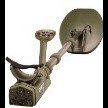Detecting Depth Vs. Coil Size And Shape (long, Detailed)
-
Similar Content
-
- 21 replies
- 1,449 views
-
- 0 replies
- 158 views
-
- 2 replies
- 372 views
-
- 11 replies
- 762 views
-
I Wonder If Nel Coils Is Considering Manufacturing Coils For Garrett's New Anticipated Release?
By John-Edmonton,
- 3 replies
- 430 views
-
- 35 replies
- 2,113 views
-
-












Recommended Posts
Create an account or sign in to comment
You need to be a member in order to leave a comment
Create an account
Sign up for a new account in our community. It's easy!
Register a new accountSign in
Already have an account? Sign in here.
Sign In Now